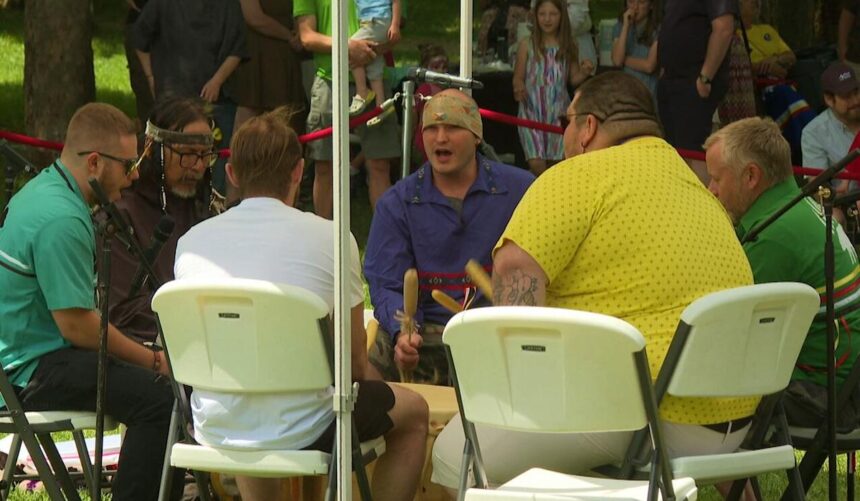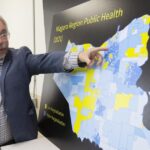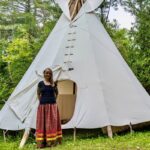The morning mist lingered over Quidi Vidi Lake as I arrived at the gathering site just before sunrise. A small crowd had already formed—some wrapped in blankets against the June chill, others holding steaming cups of tea between gloved hands. In the growing light, I could make out the silhouettes of drums being unpacked and sacred medicines being prepared for the sunrise ceremony that would begin National Indigenous Peoples Day in St. John’s.
“This is where it starts—with acknowledging the new day and our relationship to everything around us,” said Elder Elizabeth Penashue, her breath visible in the cool morning air. “When we gather like this, we’re continuing something our ancestors have done since time began.”
National Indigenous Peoples Day celebrations in St. John’s this year expanded beyond a single day of recognition into a week-long series of events designed to educate, honor, and celebrate the rich cultural heritage of the Mi’kmaq, Innu, Inuit, and other Indigenous peoples with connections to Newfoundland and Labrador. The province’s complex colonial history has often obscured these deep Indigenous roots, making these celebrations particularly significant.
The annual celebration held on June 21—the summer solstice—carries special meaning as both the longest day of the year and a traditional time of gathering and ceremony for many Indigenous peoples across Turtle Island. In St. John’s, this year’s programming brought together traditional knowledge keepers, artists, community organizations, and hundreds of attendees from across the province.
At the newly established Indigenous Cultural Centre downtown, Megan White, a Mi’kmaq artist from Flat Bay, guided visitors through the intricate process of traditional quillwork. “What you’re seeing isn’t just craft,” she explained as her fingers deftly sorted porcupine quills by size. “These patterns tell stories about our relationship to the land. When I teach these techniques, I’m passing down not just a skill, but our ways of seeing and understanding the world.”
Nearby, children gathered around storyteller Matthew Pike as he shared Inuit legends passed down through generations in northern Labrador. The rapt faces of both Indigenous and non-Indigenous children highlighted the universal appeal of these narratives that connect humans to the natural world.
The afternoon powwow at Bannerman Park drew the day’s largest crowds. Under unusually cooperative St. John’s weather—sunny and mild with just enough breeze to animate the dancers’ regalia—drum groups from across the Atlantic provinces led grand entries, honor songs, and competitive dance categories.
“What makes our celebration unique in St. John’s is that we’re creating something that reflects multiple Indigenous identities,” explained Jenelle Paul, one of the event organizers and member of Miawpukek First Nation. “This isn’t just about visibility. It’s about creating spaces where our cultures can be lived and experienced in their fullness.”
According to data from Statistics Canada, the Indigenous population in Newfoundland and Labrador has grown significantly in recent years, with more than 45,000 people self-identifying as First Nations, Métis or Inuit in the 2021 census—nearly double the number recorded a decade earlier. This growth reflects both demographic changes and an increasing willingness of people to reconnect with and claim their Indigenous identities after generations of suppression.
The celebrations also included opportunities for deeper learning about the province’s colonial history. At Memorial University, a panel discussion featuring Indigenous scholars and knowledge keepers explored the impacts of Newfoundland’s late entry into Confederation (1949) on Indigenous rights recognition, which created unique challenges for Indigenous communities in the province.
“When Newfoundland joined Canada, there was no mention of Indigenous peoples in the Terms of Union,” explained Dr. Sylvia Moore, an Indigenous education researcher at Memorial’s Grenfell Campus. “This created a legal and political vacuum that communities have been fighting to address ever since.”
For younger Indigenous people at the celebrations, the day represented both a connection to traditional ways and an affirmation of evolving Indigenous identities. Seventeen-year-old Jordan Benoit, who performed with the Eastern Eagle Singers, described finding belonging through culture.
“Growing up in St. John’s, I sometimes felt disconnected from my Mi’kmaq heritage,” Benoit told me between drumming sets. “Learning these songs and being part of this group has given me a stronger sense of who I am. Days like today matter because they show that we’re still here, still creating, still celebrating.”
The evening’s events transitioned to the Arts and Culture Centre, where Indigenous musicians, dancers, and spoken word artists showcased contemporary expressions of Indigenous culture. The sold-out performance demonstrated the appetite for Indigenous arts in the province’s capital city.
Local businesses also participated in marking the day. Along Water Street, several restaurants offered special menus featuring traditional Indigenous ingredients like seal, partridgeberries, and Arctic char prepared by Indigenous guest chefs. At Mallard Cottage in Quidi Vidi Village, chef Trent O’Brien collaborated with Inuit culinary educator Nellie Winters on a menu that blended traditional preservation techniques with contemporary presentations.
According to the First Peoples Group, which helped coordinate various aspects of this year’s expanded celebrations, attendance across all events exceeded 5,000 people—roughly double previous years’ participation.
The day wasn’t without acknowledgment of ongoing challenges. At several events, speakers emphasized the continued work needed to address the legacy of residential schools, the overrepresentation of Indigenous people in provincial jails, and environmental threats to traditional territories.
“Celebration doesn’t mean we forget the hard truths,” said Chief Mi’sel Joe of Miawpukek First Nation in his address at the closing ceremony. “It means we recognize that our survival, our cultures, our languages are themselves acts of resistance and triumph.”
As darkness fell and the celebrations wound down, I watched families gathering their children, elders being helped to waiting cars, and young people exchanging contact information after forming new connections. The day had accomplished what the best cultural celebrations do—creating spaces where community can be strengthened, where learning can happen naturally, and where the full humanity of people often pushed to society’s margins can be centered and celebrated.
For St. John’s, a city built on land with thousands of years of Indigenous history that has often gone unacknowledged, National Indigenous Peoples Day represents not just a calendar observation, but a step toward a more honest relationship with the complete story of this place—past, present, and future.






